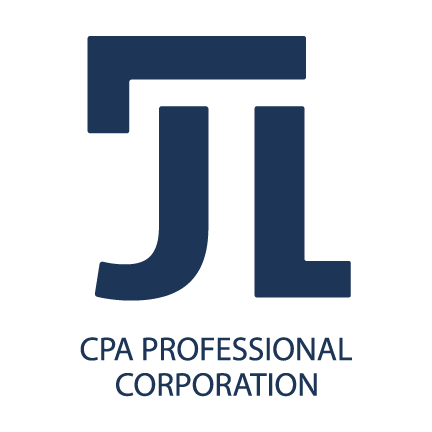Preventing Cost Overruns in Construction
It was supposed to be a straightforward project – solid estimates, a clear timeline and everything lined up to make a decent profit. But as the project drags on, the unexpected costs started piling up.
The extra materials you had to order, the equipment breakdowns, the rework needed because of an oversight – none of these expenses can be billed to the client.
Now you’re at the point where you’re not just losing profit, you’re dipping into your own funds to keep the job going. It feels like no matter how hard you try; you’re working harder for less.
No one starts a project expecting to lose money, but the reality is, cost overruns can creep in before you even realize what’s happening. When the numbers stop adding up, it’s your bottom line that takes the hit.
That’s why preventing cost overruns isn’t just a nice-to-have; it’s critical to keeping your business afloat and profitable.
Why Do Cost Overruns Happen?
1) Poor Planning
When a project starts without a well-thought-out plan, important costs often get overlooked. Rushed or incomplete planning leaves room for unexpected expenses later on.
Example: A construction company underestimated the time and manpower needed to excavate a site, leading to costly delays as they had to hire additional workers mid-project.
2) Unforeseen Changes
No matter how well you plan, things change – whether it’s a sudden material shortage or a labour strike. These shifts often come with extra costs that weren’t part of the original budget.
Example: After starting a project, the material you needed to buy was out of stock and you had to buy a more expensive alternative, throwing the original budget out the window.
3) Inaccurate Cost Estimations
Miscalculating the costs and quantity of materials, labour or subcontractors can send your budget spiraling out of control. If your estimates are too optimistic, you’ll end up absorbing those extra costs.
Example: A contractor underbid on the cost of lumber, only to find that prices had risen dramatically by the time they purchased it, resulting in a major budget overrun.
4) Lack of Communication
When your team isn’t in sync, mistakes happen, like ordering the wrong materials or missing deadlines. These communication breakdowns often lead to costly delays and rework.
Example: A miscommunication between the project manager and site foreman led to ordering the wrong type of piping, which had to be replaced, costing both time and money.
5) Poor Contract Management
Vague or unclear contracts can create confusion about the project’s scope. This often results in unanticipated work and expenses that weren’t accounted for in the original agreement.
Example: A project contract didn’t clearly define who was responsible for site cleanup, leading to additional costs when the construction company had to hire a third party to handle it.
Why Preventing Cost Overruns is Critical
1) Project Margins Shrink
Every extra dollar spent on unplanned costs cuts into your profit, making it harder to hit your financial targets. This can usually be identified on work-in-progress reports.
2) Cash Flow Problems
When unexpected expenses pile up, you may run into cash flow issues, leaving you scrambling to cover payroll and bills while waiting for payments. Overbilling/Underbilling shows which projects have potential cash flow problems.
3) Strained Client Relationships
Overruns can lead to project delays or reduced quality of work, which puts strain on your relationship with clients, even if they’re not directly paying for the extra costs.
4) Project Delays
Having to absorb extra costs can lead to delays if you don’t have the budget to cover materials or labour.
5) Long-Term Business Growth is Stunted
Repeated cost overruns limit your ability to reinvest in your business. Without profits, it becomes harder to invest in new technology, expand your team or take on bigger projects. If unchecked, this can stifle growth and make it hard to compete in the market.
Case Study: A Real-World Example
A few years ago, I worked with a mid-sized specialty contractor known for it’s quality work in residential construction. Despite having several projects in progress and many more lined up, they were struggling with recurring cost overruns.
The Problem
They had multiple projects at various stages of completion, but costs kept creeping up, and it wasn’t clear why. These overruns were eating into the company’s profits and causing cash flow issues. The line of credit was nearly maxed out, adding to the stress.
The Struggles
The owner was constantly stressed as the cost overruns directly impacted the company’s profitability. It became clear that understanding why the overruns were happening was critical to preventing further damage.
The Solution
To get to the bottom of it, I implemented a Work in Progress (WIP) analysis. We compared the costs incurred to date with the estimated costs to complete for each project. We also reviewed billings against costs to identify any shortfalls.
This analysis was performed monthly which allowed us to spot trends and identify the exact reasons behind the overruns.
The Outcome
By performing regular WIP analyses, they were able to pinpoint why cost overruns were happening and take action to prevent them. They also applied these lessons to future bids, ensuring they were better prepared to avoid overruns from the start.
Five Lessons Learned and Key Takeaways
Through the experience of working with the specialty contractor, several key lessons emerged that can help prevent cost overruns and keep projects on track. Here’s what you can take away and apply to your own business.
1) Track Costs Continuously
Don’t wait until the end of a project to see where you stand financially. Regularly tracking costs throughout the project helps you catch overruns early and address them before they spiral out of control.
2) Perform Monthly WIP Analysis
A monthly Work in Progress (WIP) analysis is essential for spotting cost overruns before they become major problems. Comparing costs incurred to date against estimates to complete keeps you informed about your budget.
3) Reconcile Costs Against Billings
Regularly compare project costs to billings to ensure you’re staying on track. Any discrepancies can signal a cost overrun or underbilling, giving you time to take corrective action.
4) Communicate with Your Team
Make sure your team is aligned on project goals and costs. Clear communication can prevent mistakes that lead to delays or overruns, especially when it comes to ordering materials and scheduling labour.
5) Incorporate Learnings into Future Bids
Use what you’ve learned from past cost overruns and improve your bidding process. Accurate estimates and better planning can prevent the same mistakes from happening on future projects.
Final Thoughts
Cost overruns can be a huge setback for construction companies, eating into profits, creating cash flow problems and threatening the success of your projects. But with the right approach, they’re avoidable.
By learning from the experiences shared in this blog, you can start tracking costs regularly, performing monthly WIP analyses and reconciling costs against billings to stay ahead of potential overruns. Clear communication and applying lessons learned to future bids can help you avoid these issues before they start.
The more proactive you are in identifying and addressing overruns, the more control you’ll have over your projects – and ultimately, your company’s financial health.
Let me know down in the comments if there are specific topics that you’d like me to cover next.
See you soon!
Hey there. I’m Jeff.
I started an online, modern accounting firm called JTL CPA. My goal is to help Architects, Engineers and Contractors in Ontario streamline their finances, enhance clarity and grow their business.
With more than a decade of experience working with various General Contractors and Specialty Trades, firms in the AEC industry want to work with me because I:
Help simplify their financial management to save time and reduce stress
Help gain clear, real-time insights into their financial status to make informed decisions
Help them leverage expert advice and support to drive the growth of their business
Follow me on LinkedIn or find out more at my website.
Need personalized help? Contact us today!

